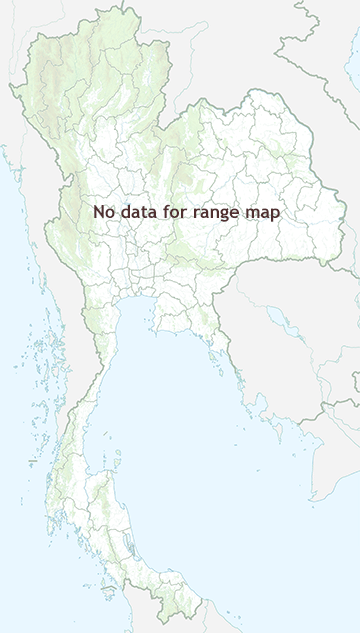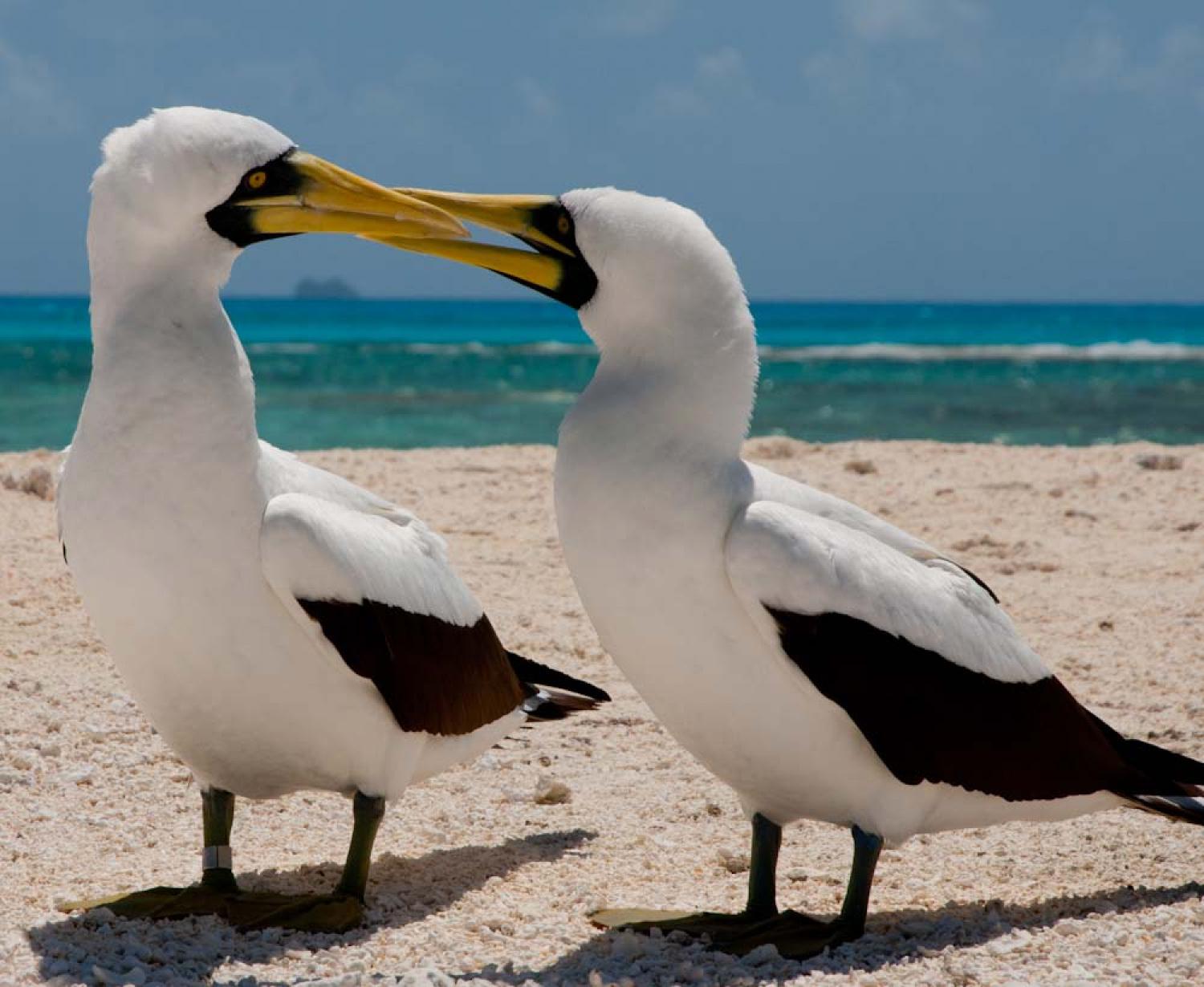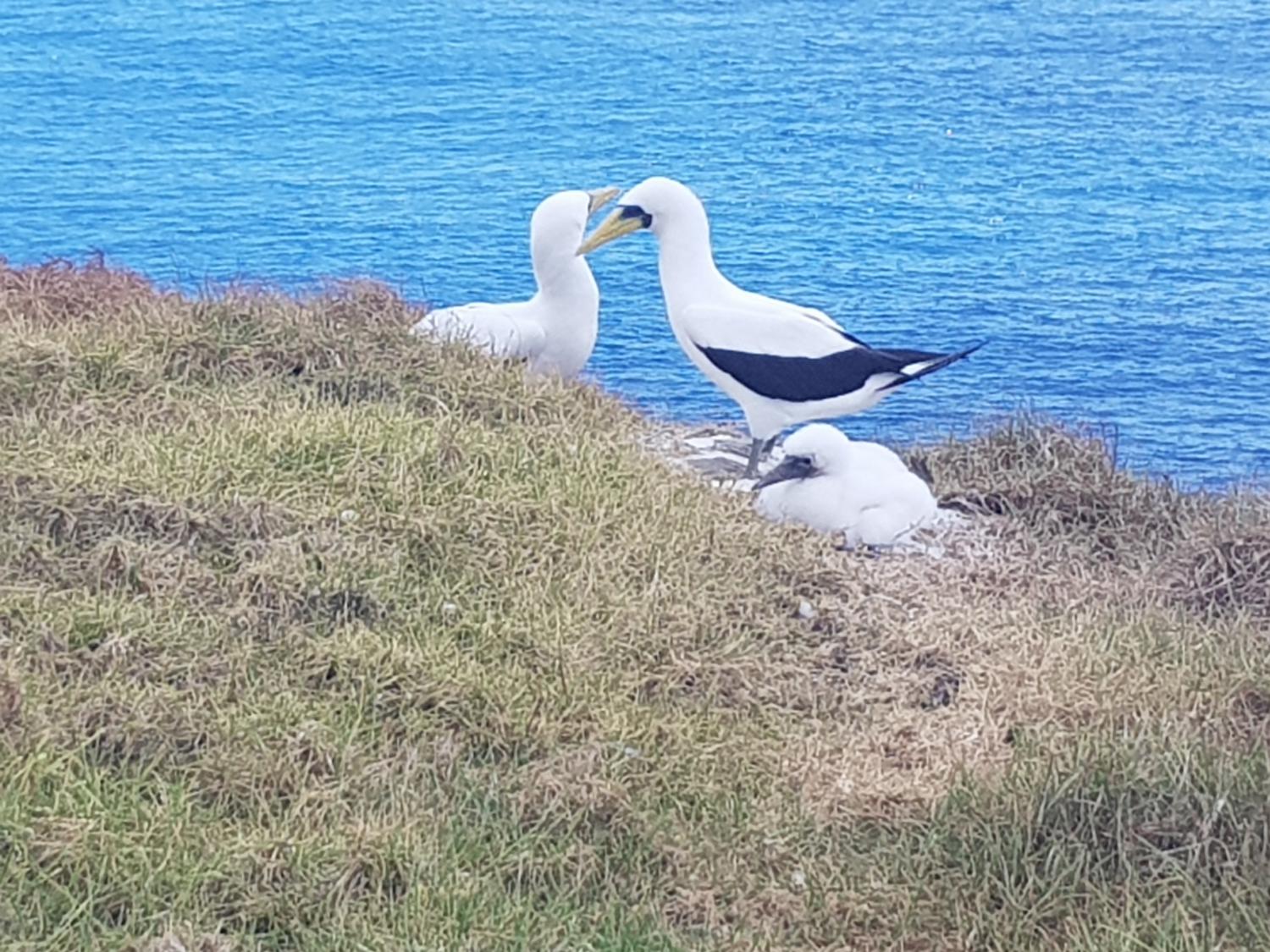Species of Thailand
Masked booby
Sula dactylatra
René-Primevère Lesson, 1831
In Thai: นกบู๊บบี้หน้าดำ
:"Parasula" redirects here. The fossil genus established by C.J.O. Harrison is properly called Empheresula.
The masked booby (Sula dactylatra) is a large seabird of the booby family, Sulidae. This species breeds on islands in tropical oceans, except in the eastern Atlantic; in the eastern Pacific it is replaced by the Nazca booby, Sula granti, which was formerly regarded as a subspecies of masked booby. It is also called the masked gannet or the blue-faced booby.
A conspicuous and distinct gannet-like species, it was proposed for separation to a monotypic subgenus Pseudosula, but the Nazca booby and as it seems also the brown booby (S. leucogaster) are quite close relatives.
Classification
First described by French naturalist René-Primevère Lesson in 1831, the masked booby is one of six species of booby in the genus Sula. The Nazca booby (S. granti) was formerly regarded as a subspecies.
Description
This is the largest booby, at 74 – 91 cm long, with a 137 - 165 cm wingspan and 1.2 - 2.35 kg weight. Adults are white with pointed black wings, a pointed black tail, and a dark grey facemask. The sexes are similar, but the male has a yellow bill, and the female's is greenish yellow; during the breeding season they have a patch of bare, bluish skin at the base of the bill. Juveniles are brownish on the head and upperparts, with a whitish rump and neck collar. The underparts are white. Adult plumage is acquired over two years.
The masked booby is silent at sea, but has a reedy whistling greeting call at the nesting colonies. While on the breeding grounds, these birds display a wide range of hissing and quacking notes.
Behaviour
Masked boobies are spectacular divers, plunging diagonally into the ocean at high speed. They mainly eat small fish, including flying fish. This is a fairly sedentary bird, wintering at sea, but rarely seen far away from the breeding colonies. However, Caribbean birds occasionally wander north to warm southern Gulf Stream waters off the eastern seaboard of the United States. More remarkably, there have been three western Palaearctic records of masked booby, presumably dactylatra, all from Spanish waters, although one of these also entered French territorial areas.
Breeding
The masked booby nests in small colonies, laying two chalky white eggs on sandy beaches in shallow depressions, which are incubated by both adults for 45 days. In most cases, the first chick will kill its smaller, weaker sibling after it hatches. Siblicide has been well studied in this species; researchers such as David Anderson have demonstrated that while the boobies can manage to feed two chicks if siblicide is prevented, they do so at a steep penalty to health and future reproductive success.
Compared to other species of boobies such as the blue-footed booby, siblicide is obligatory in the masked booby. One reason is because the masked boobies build very shallow flat nests, so older chicks can expel their younger siblings with relative ease. Blue-footed booby parents, meanwhile, build nests with steeper sides, thus preventing some older chicks from engaging in siblicidal behaviour.
This article uses material from Wikipedia released under the Creative Commons Attribution-Share-Alike Licence 3.0. Eventual photos shown in this page may or may not be from Wikipedia, please see the license details for photos in photo by-lines.
Category / Seasonal Status
BCST Category: Recorded in an apparently wild state within the last 50 years
BCST Seasonal status: Non-breeding visitor
Scientific classification
- Kingdom
- Animalia
- Phylum
- Chordata
- Class
- Aves
- Order
- Suliformes
- Family
- Sulidae
- Genus
- Sula
- Species
- Sula dactylatra
Common names
- Thai: นกบู๊บบี้หน้าดำ
Subspecies
Sula dactylatra dactylatra, G. F. van Tets, C. W. Meredith, P. J. Fullagar & P. M. Davidson, 1988
Common name: Atlantic masked booby
Range: Breeds in the Caribbean and some Atlantic islands including Ascension Island. It has recently started breeding off Tobago, formerly being known in this area only from a single sight record from an oil rig off Trinidad.
Sula dactylatra melanops, G. F. van Tets, C. W. Meredith, P. J. Fullagar & P. M. Davidson, 1988
Common name: Western Indian Ocean masked booby
Range: Breeds in the western Indian Ocean.
Sula dactylatra personata, G. F. van Tets, C. W. Meredith, P. J. Fullagar & P. M. Davidson, 1988
Common name: Austropacific masked booby
Range: Breeds in the central and western Pacific and around Australia, as well as off Mexico and on Clipperton Island. Birds of the latter two locations have been separated as subspecies granti, and the north west Australian population has been named as subspecies bedouti, but neither is usually considered valid.
Sula dactylatra tasmani (including S. d. fullagari), G. F. van Tets, C. W. Meredith, P. J. Fullagar & P. M. Davidson, 1988
Common name: Tasman booby, Lord Howe masked booby
Range: The form breeding on Lord Howe and the Kermadec Islands. Large prehistoric specimens known from the former and Norfolk Island are sometimes considered a distinct "species" (properly: subspecies). If this is correct, the extant population's name would be S. d. tasmani as S. d. fullagari was described after S. tasmani. Comparison of ancient DNA form tasmani specimens and living fullagari indicates that they are not distinct.
Conservation status

Least Concern (IUCN3.1)
Photos
Please help us review the bird photos if wrong ones are used. We can be reached via our contact us page.
Range Map


